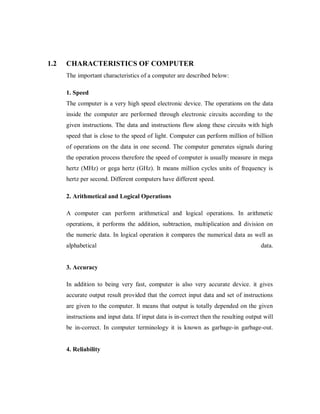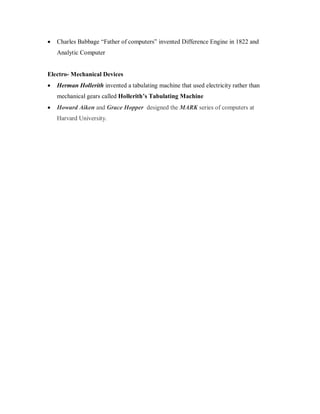The document provides an introduction to the history of computers. It discusses how early humans used tools like fingers, stones, and beads to count and perform basic calculations. Early mechanical calculating devices were then developed, including the abacus used by Babylonians in 300 BC. The first modern computer was the Pascaline, a mechanical calculator invented by Blaise Pascal in 1642 to help his father with taxes. In 1822, Charles Babbage proposed the Difference Engine, a steam-powered mechanical calculating machine. This marked the beginning of efforts to develop automated calculating machines and laid the foundations for modern computer development.












